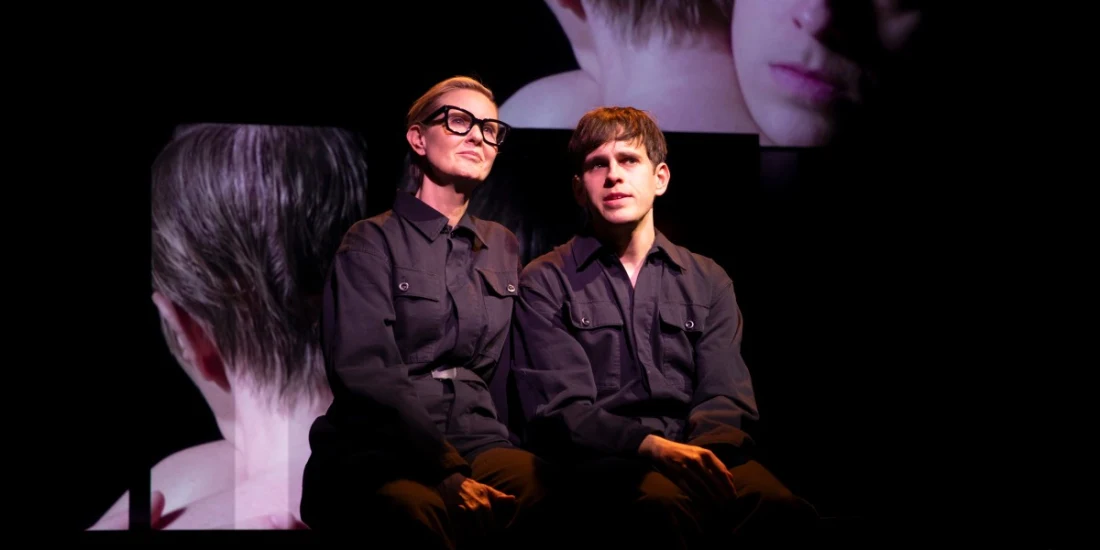'The Seven Year Disappear' review — Cynthia Nixon stars as a woman grappling with art and motherhood
Read our review of The Seven Year Disappear off Broadway, a world-premiere play written by Jordan Seavey and starring Cynthia Nixon and Taylor Trensch.
That old adage “absence makes the heart grow fonder” does not seem to apply to the prickly, co-dependent, and possibly parasitic relationship between performance artist icon Miriam (Cynthia Nixon) and her son/business partner Naphtali (Taylor Trensch) in The Seven Year Disappear. Naphtali brokers a deal with MoMA for the commission of a new piece by Miriam, which results in her going completely MIA with no explanation to seemingly anyone. In the interim, Naphtali struggles to make sense of his life without his mother, and playwright Jordan Seavey struggles to make sense of the concepts the show aspires to tackle.
All of Naphtali’s conversations with other people, including various lovers, are played by Nixon, as if Naphtali sees his mother or actively looks for her everywhere in her absence. It’s an interesting premise, prancing along a taboo line between mother and son. But for all the ways the show tells us about the dynamic between Naphtali and Miriam — particularly the use of her son’s life as part of her artistic practice — the real evidence of this form of exploitation doesn’t seem to be present in the text. We don’t have a strong grasp of what kind of art Miriam actually makes (the staging says she’s a filmmaker) beyond the fact that she plumbs from her own life.
The Seven Year Disappear circles around questions about artistic practice and purpose, growing up as if your life is not your own, and the conflation of identity and consumption. But Seavey seems uninterested in engaging with these ideas directly and thoroughly. The characters never share their views on the purpose of art, particularly in the context of using one’s own life as material. There’s no detailed engagement with art as processing or capital or exploitation. At most, Naphtali confesses he’s “fucked up” because of his relationship with his mother's work, but such a straightforward declaration betrays the play's lack of linguistic imagination.
There’s a whole subplot in which Naphtali leaves the art world to work for Hillary Clinton, and beyond the explicitly said projection of his mommy issues onto the presidential candidate, no connective tissue appears to exist between these story arcs — not even the ways in which politics and the art world are often linked. For all the name-dropping of artists like Max Ernst and David Wojnarovic, The Seven Year Disappear doesn’t quite know what it wants to say about art as politics, politics as life, and the sometimes dubious, sometimes revolutionary interbreeding between the two.
Yet Nixon fights her way through mediocre dialogue to offer a multifaceted performance of a woman whose life is as much an art piece as it is a projection of the people around her. Nixon’s fiery gaze shoots left and right when she’s suspicious, her nostrils flare when she’s offended, and her eyes moisten when she experiences a hint of inspiration. As she rotates through various, mostly male characters, she takes their every gesture seriously, finding a compelling middle ground between how Miriam sees these people and how her son might be imagining them.
Miriam, an old master of the art world, is trying to revolutionize the performative act of mothering a son, but The Seven Year Disappear hasn’t put together a coherent artist statement.
Photo credit: Cynthia Nixon and Taylor Trensch in The Seven Year Disappear. (Photo by Monique Carboni)
Originally published on
